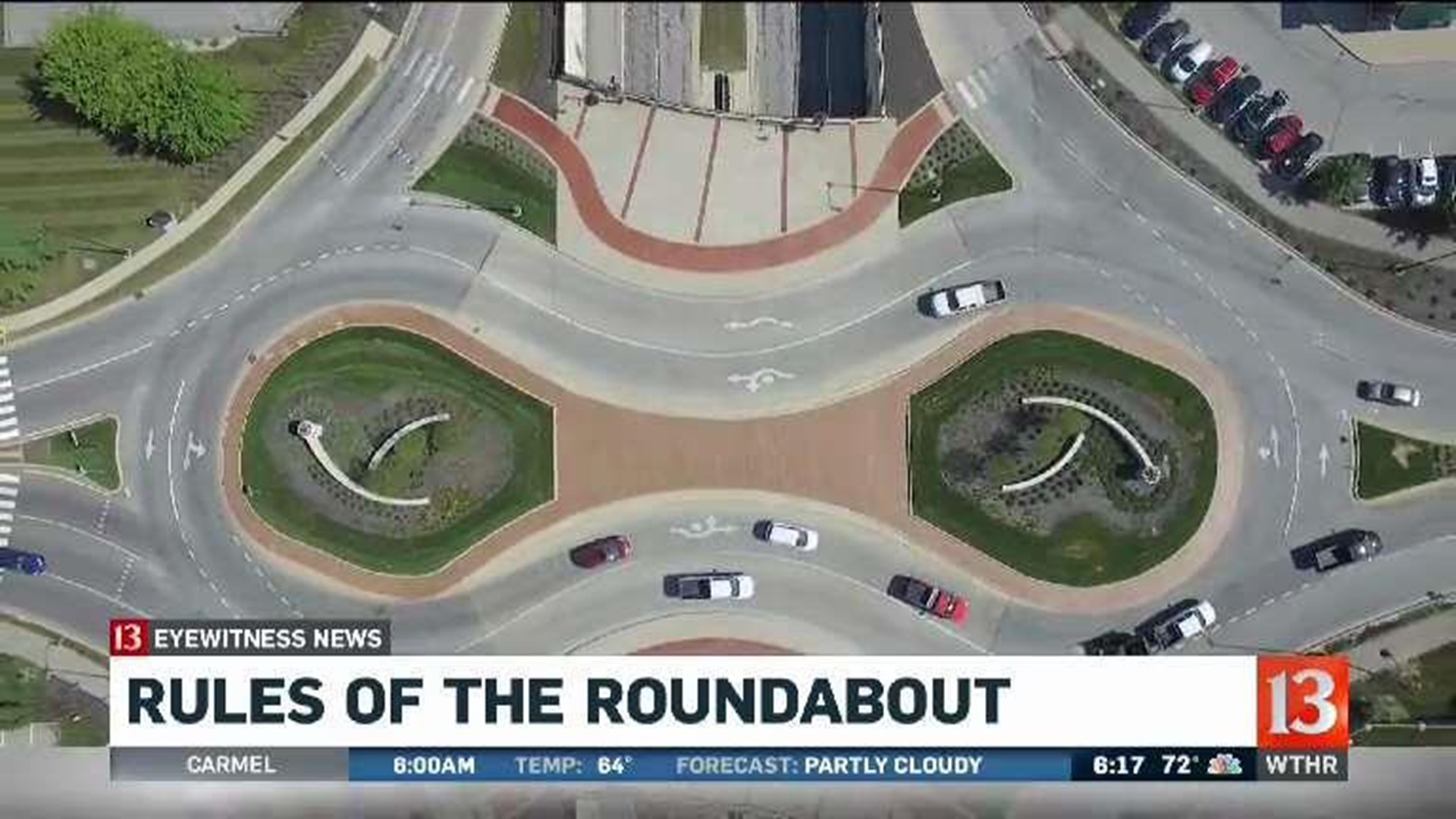INDIANAPOLIS (WTHR) — Maybe you love them or hate them.
No matter how you feel about roundabouts, they are here to stay with more communities building them.
But not everyone knows how to use them, and that can be dangerous.
Sunrise Anchor Julia Moffitt recently talked with a driving expert to find out what drivers are doing wrong and right.
Cities around Indiana are building them at rapid speed.
They ease congestion; are much cheaper than traffic lights; and when there is an accident in a roundabout, there are fewer injuries, and not as much damage to the vehicle.
Steve Moore has been teaching driving for the last 14 years.
"It's a great way to manage an intersection, traffic flows smoothly, they are safer," he said.
In Carmel for example, a city with 117 roundabouts, at intersections where they have replaced stop signs or traffic lights with roundabouts, city leaders say injury accidents have gone down by 80 percent, and overall accidents have decreased by 40 percent.
But still, some drivers just can't figure them out or don't want to.
One of the first things Moore teaches his students about roundabouts is to take their time.
"It doesn't do you any good to hurry and get up to the entrance of the roundabout and have to stop. If you would just slow down and let traffic pass you may be able to go in behind the traffic after it goes around," Moore said.
But on the other end, he said drivers shouldn't treat roundabouts like a stop sign.
"That defeats one of the advantages of a roundabout which is to keep traffic flow moving smoothly," he said.
Although Moore said it's not a law in Indiana, using turn signals has its benefits.
"It's helpful to people trying to enter the round about if they know where the drivers in the roundabouts are going to exit."
And a must he said: always look left before entering the roundabout.
Steve's No. 1 tip to drivers: don't change lanes in traffic circles.
Also, large trucks and school buses have the right of way because they are longer and need to swing out into the lanes to get through.

